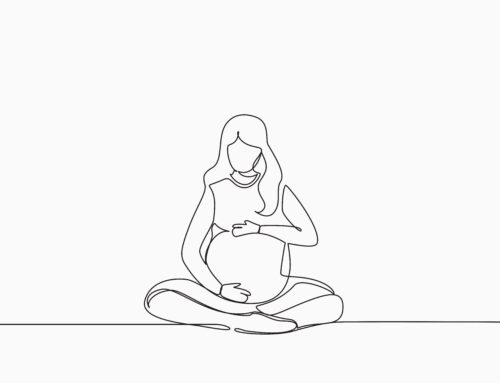
Giving birth (especially for the first time) can be scary. If you are pregnant, you may not know what to expect or how to prepare if you end up having a C-section. C-sections can be planned or unplanned depending on if you have any complications during your pregnancy or what your doctor recommends. A C-section may be the safest option to make sure you deliver a healthy baby.
In recent years the delivery rate for C-sections has decreased in the United States. In 2009, 32.9 percent of women delivered their babies via C-section and in 2015 the rate decreased to 32 percent according to the U.S. Centers for Disease Control (CDC). Having a C-section doesn’t have to be all bad and the more you are prepared for having this surgery, the better you will feel during and after surgery.
What is a C-Section?
A C-section is short for caesarean section. It occurs when a baby is born through surgically opening the mother’s stomach and uterus. During a C-section you are given a regional anesthesia which numbs you from the waist down, which means you are awake during the surgery. Once the anesthesia has taken effect your OB/GYN will make a small horizontal incision on your lower belly working their way down to your uterus.
Reasons for having a C-sections vary: some doctors may schedule them in advance, while others may request emergency C-sections due to unforeseen complications that arise during labor.
The American College of Obstetricians and Gynecologists (ACOG) have expressed their concerns over what seems to be the overuse of C-sections in the United States. Women who have gotten one C-section in their life have a 90 percent chance of having another one if they decide to have another baby. The ACOG have established some new guidelines which are aimed at preventing women to have unnecessary C-sections. These guidelines include:
- Allowing women to push longer before rushing to a C-section. For example, pushing for at least two hours if you have had a baby before, three hours if it’s your first baby, and even longer in some situations if you have had an epidural.
- Encouraging women to avoid gaining excess weight during pregnancy to reduce their chances of being overweight.
According to Live Science, the rate of C-sections has increased since the 1990s largely due to increased rates of obesity, diabetes, multiple births, and women having children later in life. It is important to know that if you are overweight or obese during pregnancy you are more likely to give birth via C-section, have a longer labor, and/or have a lower chance of having a vaginal birth after having a C-section. Obese women are three times more likely to give birth via C-section while overweight women are twice as likely, according to researchers at Seattle’s Swedish Medical Center.
Here is a list of of possible reasons for having a C-sections during labor:
- You’ve had a previous C-section.
- You’ve previously had an invasive uterine surgery.
- You’re pregnant with more than one baby.
- Your baby is expected to be larger than the average baby.
- Your baby is breech or has an abnormality that would make giving birth vaginally dangerous.
- You’re HIV-positive.
What to Expect During Recovery After a C-section
It takes more time to recover from having a C-section than a vaginal birth. Women who have had a C-section will likely spend two to four days in the hospital afterwards and it may take up to six weeks to fully recover from the surgery. A woman’s abdomen will likely be sore after the surgery and their OB/GYN may prescribe pain medicine to help with the discomfort. Bleeding for four to six weeks afterwards is also expected and normal. If you have just had a C-section it is advised not to engage in hard labor or sex for at least a month to make sure there isn’t too much bleeding and the incision wound heals properly.
C-sections are done to make sure you and your baby are healthy and to make sure there is a smooth delivery. It can be scary if you end up having a scheduled or emergency C-section but being proactive and learning as much as you can about the process can help ease those fears. Never hesitate to reach out to your doctor with any questions or concerns you may have about the surgery. Having a baby is the biggest blessing and it doesn’t matter how they were delivered into this world as long as they are healthy.
Sources:
https://www.livescience.com/44726-c-section.html
https://www.babycenter.com/0_c-sections-giving-birth-by-cesarean-section_160.bc





